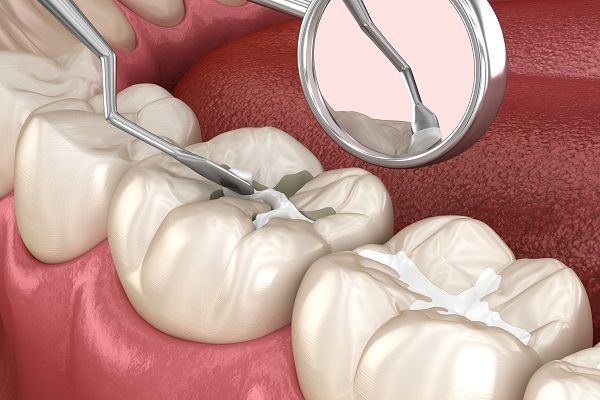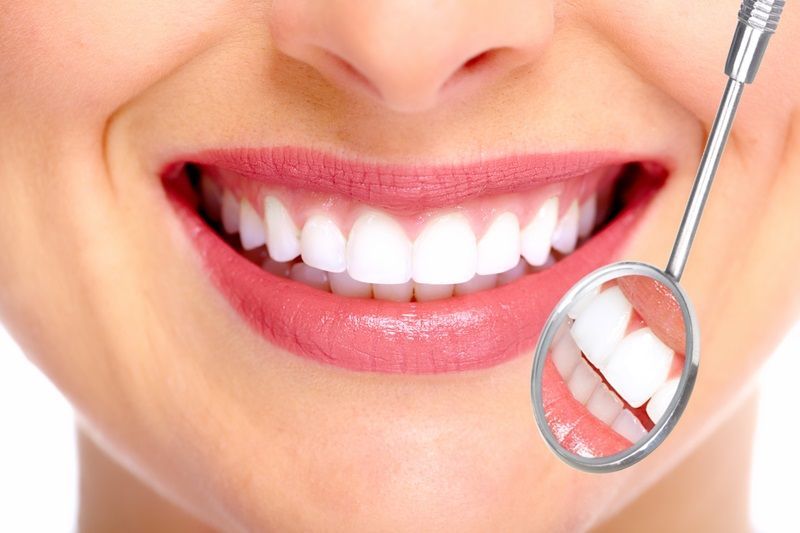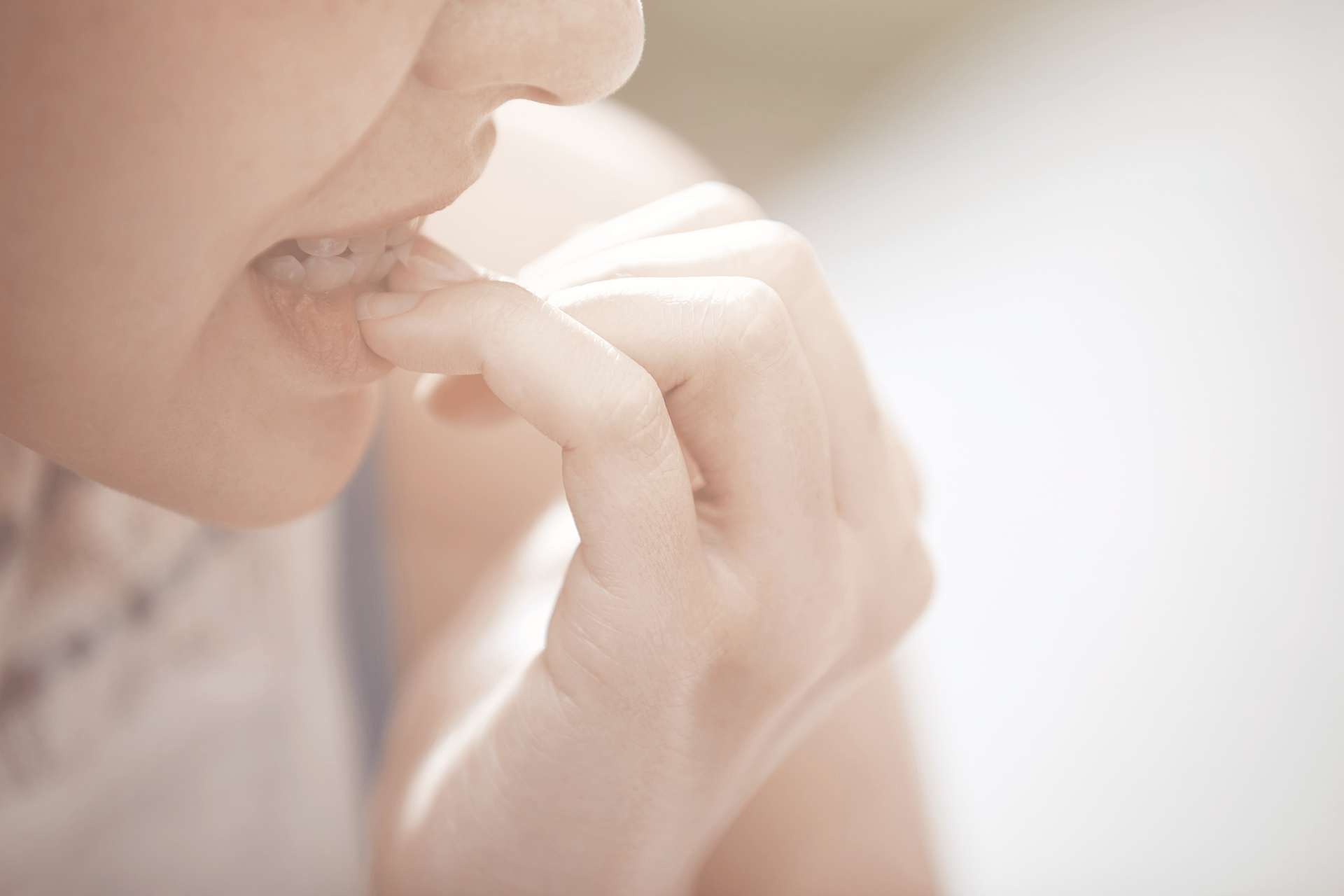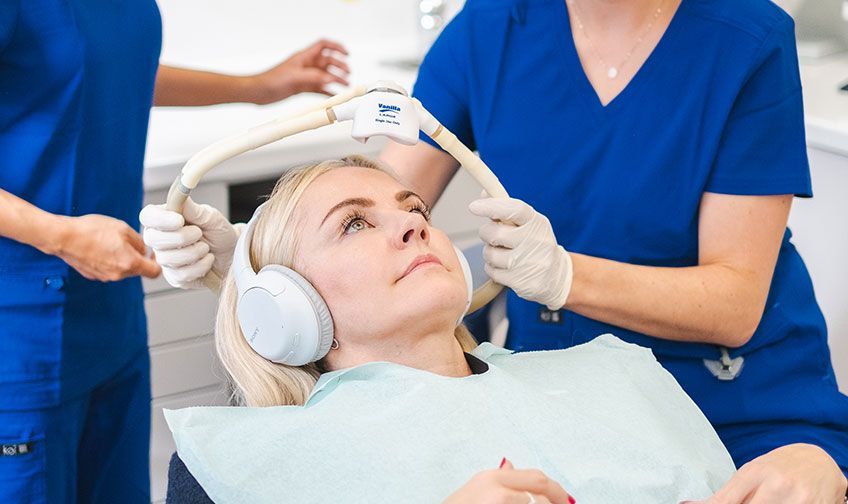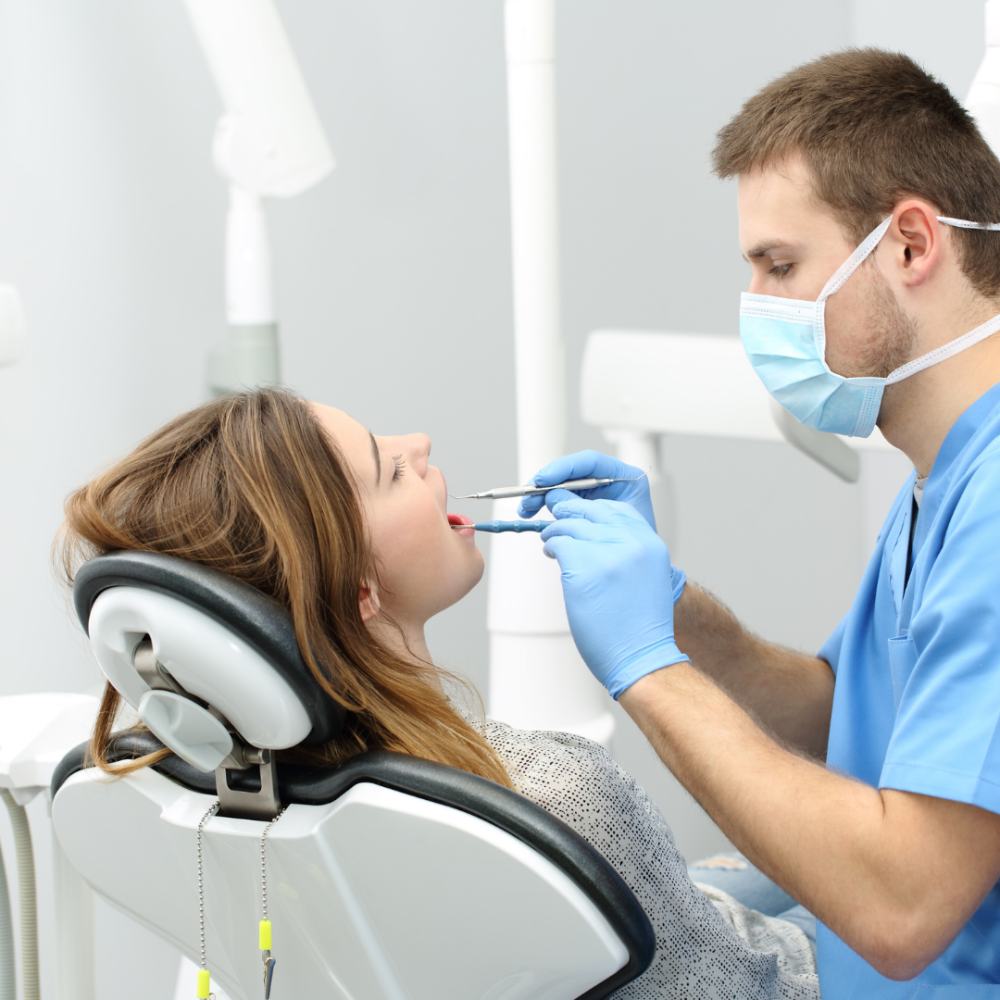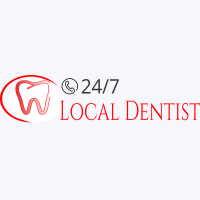Tetracycline is an antibiotic that is only given to adults and children over the age of eight because it has been linked to tooth discoloration in young children. When teeth are exposed to tetracycline during the mineralization or calcification process, the tetracycline binds to calcium ions in the teeth, which causes an initial fluorescent yellow discoloration. After the teeth are exposed to light, the tetracycline oxidizes, causing the discoloration to fade from fluorescent yellow to nonfluorescent brown over the subsequent months or years. This discoloration is long-lasting and can range from yellow to grey or brown. Tetracycline tooth staining is influenced by the dosage used, the length of treatment or exposure, and the stage of tooth calcification.
Tetracycline has side effects that aren’t limited to tooth discoloration. Tooth enamel can be weakened by antibiotic exposure, putting teeth at risk for decay (cavity). The medication can sometimes bind to the calcium phosphate in the teeth of young children. This causes it to be absorbed by the dental tissues. The dental enamel of affected teeth can be damaged, making them more vulnerable to dental cavities .
Tetracycline causes intrinsic staining, making the stain a permanent part of the tooth enamel and dental whitening treatments are not sufficient to remove it. There are teeth whitening treatments available, but they aren’t always effective and can take a long time to work. Whitening products such as toothpaste, strips, and home whitening kits will not work on the affected teeth. It may take up to a year for tetracycline-stained teeth to lighten.
Tetracycline affects the color of the dentin, which is the interior of the tooth. The staining of the dentin is permanent and is more visible as the enamel wears away and more of the dentin shows through. Tetracycline teeth stains are usually too strong to respond well to whitening. Teeth veneers or crowns , on the other hand, can be very effective at covering the teeth and providing a much better aesthetic appearance. To conceal stains and imperfections, a thin porcelain shell is placed over the visible front side of the teeth. Composite bonding is another alternative to porcelain veneers. A thin layer of the same material used in fillings is applied to the teeth. This procedure is less expensive than veneers, but it is not as long-lasting or as natural-looking.
People with tetracycline-stained teeth often avoid smiling because they are self-conscious. Bleaching, veneers, and crowns can all help to whiten tetracycline-damaged teeth and improve your smile confidence. The best option for you will be determined based on the degree of tooth discoloration, your budget, and the overall health of your teeth. You don’t have to live with a grey smile if your teeth have tetracycline stains. At 24/7 Local Dentist Group , we can restore your brilliant white smile. To schedule a consultation, please call (833) 220-2448.
